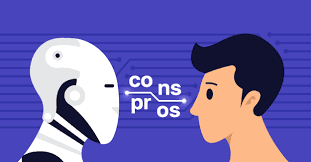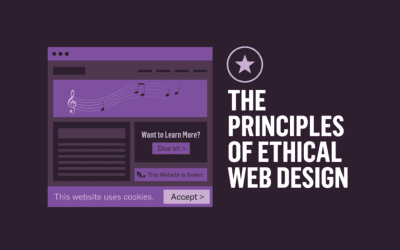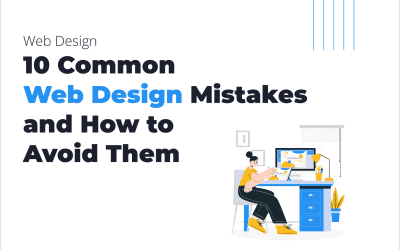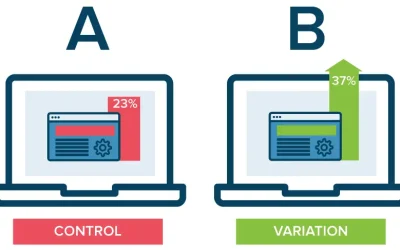Key Principles of Effective Web Design
This article is meant to answer the following queries and questions:
What are the 4 principles of web development?
What are website design guidelines recommended by Google?
What are basic web design principles and elements?
What are the 5 principles of web design?
What are the 10 principles of good website design?
What are web design principles and elements?
What is good web design?
In today’s digital age, having a website is crucial for any business or individual looking to make a mark online. However, not just any website will do. It’s essential that the design of the website is effective in conveying the intended message while engaging the visitor. This is where the Key Principles of Effective Web Design come into play. These principles ensure that a website is not only aesthetically pleasing but also functional, user-friendly, and optimized for conversions.
Key Takeaways:
- Effective web design is a combination of aesthetics and functionality.
- Consistency, colors, typography, and imagery play crucial roles in web design.
- A well-designed website can help build trust and guide visitors to take action.
- User experience is paramount; the website should be optimized for usability.

Consistency is Key
Consistency in web design ensures that the website looks and feels the same across all pages. This includes consistent use of colors, fonts, and layout. A consistent design helps in building brand recognition and offers a more professional look.
The Power of Colors
Colors evoke emotions. The choice of colors in web design should align with the brand’s message and target audience. For instance, blue often represents trust and reliability, while red can signify passion or urgency.
Typography Matters
The choice of fonts and how they are laid out plays a significant role in web design. Fonts should be readable, and there should be a clear hierarchy in the text. Headings, subheadings, and body text should be easily distinguishable.

Imagery and Visual Elements
Images and graphics can break the monotony of text and make a website more engaging. However, it’s essential to use high-quality and relevant images. Visual elements should complement the content and not distract the user.
Simplicity and Functionality
A simple design is often more effective than a complex one. The website should be easy to navigate, with clear call-to-action buttons. Functionality, such as loading speed and mobile responsiveness, should not be compromised.
Understanding the User
Designing with the user in mind is crucial. This involves understanding their preferences, behavior, and what they are looking for in a website. User feedback can provide valuable insights into this.
Tables with Relevant Facts
| Feature | Importance in Web Design |
|---|---|
| Consistency | High |
| Color Choice | Medium |
| Typography | High |
| Imagery | Medium |
| Functionality | High |
Optimization for Different Devices
With the increasing use of mobile devices, it’s essential that websites are optimized for different screen sizes. A mobile-responsive design ensures that the website looks and functions well, irrespective of the device used to access it.

SEO and Web Design
Search Engine Optimization (SEO) and web design go hand in hand. An effective web design should also be SEO-friendly to rank higher on search engines and attract more organic traffic.
Continuous Testing and Feedback
Web design is not a one-time task. It requires continuous testing and feedback to ensure that it meets the users’ expectations and the set objectives. Regular updates based on feedback can make a website more effective over time.
Integrating Social Media
Incorporating social media buttons and feeds into the web design can increase engagement and drive more traffic. It also offers an opportunity for users to share the content, increasing its reach.
Key Principles of Effective Web Design (Part 2)
The digital landscape is ever-evolving, and with it, the principles of effective web design. As users’ habits and preferences shift, so too must the design strategies that cater to them. Building on the foundational principles discussed in Part 1, let’s delve deeper into the Key Principles of Effective Web Design and explore more nuanced aspects that can elevate a website’s design from good to great.
Understanding User Behavior
One of the foundational principles of effective web design is understanding how users think and interact with websites. Their habits on the web are quite similar to customers’ habits in a store. They glance at new pages, scan some text, and click on links that catch their interest. It’s essential to note that users don’t read; they scan. They look for fixed points or anchors that guide them through the content. This scanning behavior is why it’s crucial to design web pages that cater to this habit, making information easily digestible and accessible.
The Importance of White Space
White space, often overlooked, plays a pivotal role in web design. It helps reduce cognitive load for visitors and allows them to perceive the information presented more clearly. Complex structures with cluttered designs are harder to read, scan, and interact with. By effectively using white space, designers can guide users’ attention to specific areas of the site, making the content more scannable and the user experience more pleasant.
Effective Writing for the Web
Writing for the web is different from writing for print. Users prefer concise, scannable content with clear headings and bullet points. Promotional or exaggerated language tends to be ignored. It’s essential to:
- Use short and concise phrases.
- Use a scannable layout with clear headings and visual elements.
- Use plain and objective language.
Simplicity Over Complexity
The “keep it simple” principle should be at the forefront of web design. Users are typically on a site to access information or perform a specific task, not to admire the design. A simple, intuitive design ensures that users can easily navigate the site and find what they’re looking for without unnecessary distractions.
Testing and Feedback
Testing is a crucial aspect of web design. The earlier and more frequently a design is tested, the better. Usability tests can provide insights into potential problems with a design. It’s essential to test with real users to understand how they interact with the design and gather feedback to make necessary improvements.
Conventions in Web Design
While innovation is essential, it’s also crucial to adhere to certain design conventions. These conventions reduce the learning curve for users, making it easier for them to navigate and interact with the site. For instance, placing the logo in the top left corner, having a horizontal navigation bar at the top, or ensuring that links are underlined are all conventions that users are familiar with and expect.
Frequently Asked Questions (FAQs)
1. How do users typically interact with websites?
Users’ habits on the web are quite similar to customers’ habits in a store. They glance at new pages, scan some text, and click on links that catch their interest. Most users search for something interesting or useful and click on promising candidates. If a page doesn’t meet their expectations, they often use the back button and continue their search.
2. Why is white space important in web design?
White space is crucial in web design as it helps reduce cognitive load for visitors, making it easier for them to process the information presented. It also allows designers to guide users’ attention to specific areas of the site, making the content more scannable and the user experience more pleasant.
3. What is the significance of effective writing for the web?
Writing for the web is different from writing for print. Users prefer concise, scannable content with clear headings and bullet points. Promotional or exaggerated language tends to be ignored. Effective writing ensures that the content is easily digestible, relevant, and provides value to the reader.
4. Why is simplicity a key principle in web design?
The “keep it simple” principle emphasizes that users are typically on a site to access information or perform a specific task, not to admire the design. A simple, intuitive design ensures that users can easily navigate the site and find what they’re looking for without unnecessary distractions.
5. How important are conventions in web design?
Conventions in web design are crucial as they reduce the learning curve for users. Adhering to familiar design conventions ensures that users can easily navigate and interact with the site without having to figure out how things work. This leads to a better user experience and increased trust in the website.
6. Why is testing essential in web design?
Testing is a critical aspect of web design as it provides insights into potential problems with a design. Usability tests with real users help designers understand how users interact with the design and gather feedback to make necessary improvements. Testing early and often ensures that the design meets user expectations and provides a seamless experience.














